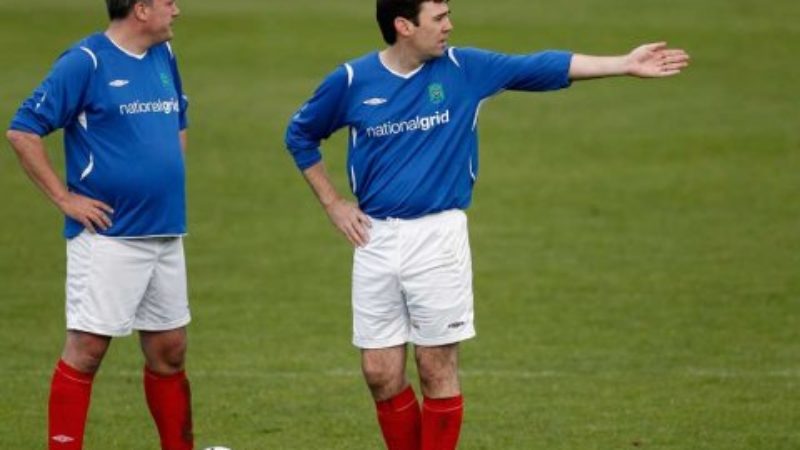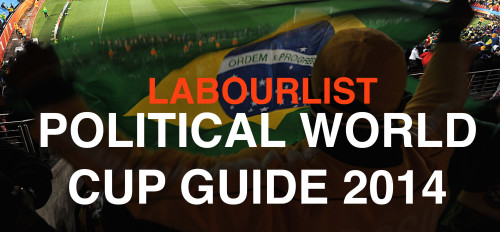
The World Cup brings with it a very serious problem. Over the course of the next month, there will be 64 football matches played – an average of around two a day. Whether, like me, your ambition is to see every single one of them, or you hope to block out every single second of it, the chances are that at some point you will be watching a game in which you have no natural affinity to either side.

For example, no immediate preference jumps to mind when Chile take on the Australia in Group B’s late kick off tomorrow. Yet part of the excitement of watching any competitive sport is picking a side. Sure, you could just watch for the beauty of the game, to see the best players in the world compete on the biggest stage… but as far as I am concerned that is pretentious hipster nonsense and it should be left at the door. I’ll be supporting Chile.
For the 2010 World Cup, Sunder Katwala produced an excellent political guide, outlining roughly where on the political spectrum each competing country’s government lay, and how democratic they were. Unfortunately, Sunder is not producing a follow up this year and so I have taken it upon myself to give it a go. I have followed the same basic format as Sunder’s 2010 version and tried to keep things as simple as possible.
Countries can either be democratic, semi-democratic or authoritarian. This is based on the most recent Economist Intelligence Unit’s Democracy Index, so if you want to complain that Ecuador’s been hard done by, take it up with them.
To remove the nuance from political positioning that is lacking from the oppositional nature of football, I have reduced the political spectrum to a childishly simplistic left or right. This is based on my intricate knowledge of all world politics/Wikipedia. For grand, spectrum-spanning coalitions, such as those in Holland and Italy, I have usually gone with the politics of the head of government. I’m sure there’ll be plenty of dissent on some of my decisions, but as anyone who ever played football as a child will have heard before: it’s my ball, my rules.
Of the 32 teams, 10 are democratic right wing, 13 democratic left, 5 authoritarian right, one authoritarian left, one semi-democratic right and 2 semi-democratic left. That’s a 50/50 left/right split overall (although personally I’ll only be backing full democracies – my apologies to Bosnia & Herzegovina, Ecuador and Algeria). EDIT: Portugal’s ruling Social Democratic Party are confusingly actually a right wing party, giving conservatives the edge overall.
For progressive neutrals, Group C wins the title Group of Death: all teams there have right wing governments. For non-English fans, it might be worth supporting any team but England in Group D: we are the only ones without a democratic left-of-centre government. France, Argentina and Chile are the only democratic socialists in their respective groups and no group is without at least one Tory team to oppose.
Brazil and Argentina will be the lefty favourites to support all the way, followed by Italy and France, and dark horses Uruguay, Chile and Belgium. For conservatives, your best chances lie with last time’s winners Spain, strong Europeans Holland, Germany and Portugal – and Mexico, Colombia and England as outside bets. Meanwhile, it looks to be a bad tournament for people opposed to democracy: Ivory Coast might have some world class players, while Ecuador could go far if they manage to top their group, but don’t be expecting Iran to set the world on fire. Er, you know what I mean.
I’ll be updating the guide as we progress through each round, assessing how competing ideologies are doing as we go along.
GROUP A
Brazil – democratic left
Croatia – democratic left
Mexico – democratic right
Cameroon – authoritarian right
GROUP B
Spain – democratic right
Holland – democratic right
Chile – democratic left
Australia – democratic right
GROUP C
Colombia – democratic right
Greece – democratic right
Ivory Coast – authoritarian right
Japan – democratic right
GROUP D
Uruguay – democratic left
Costa Rica – democratic left
England – democratic right
Italy – democratic left
GROUP E
Switzerland – democratic right
Ecuador – semi-democratic left
France – democratic left
Honduras – semi-democratic right
GROUP F
Argentina – democratic left
Bosnia and Herzegovina – semi-democratic left
Iran – authoritarian right
Nigeria – authoritarian right
GROUP G
Germany – democratic right
Portugal – democratic right
Ghana – democratic left
USA – democratic left
GROUP H
Belgium – democratic left
Algeria – authoritarian left
Russia – authoritarian right
South Korea – democratic right




More from LabourList
‘It was the best of times, it was the worst of times… my first four months as Editor’
‘Labour have a credible path to ending Britain’s dependence on food banks and have taken the first steps along it’
‘Ending homelessness must be Labour’s moral mission — and this time we must finish the job’